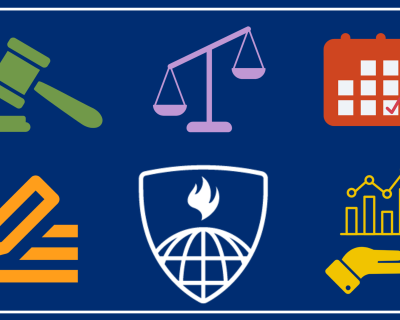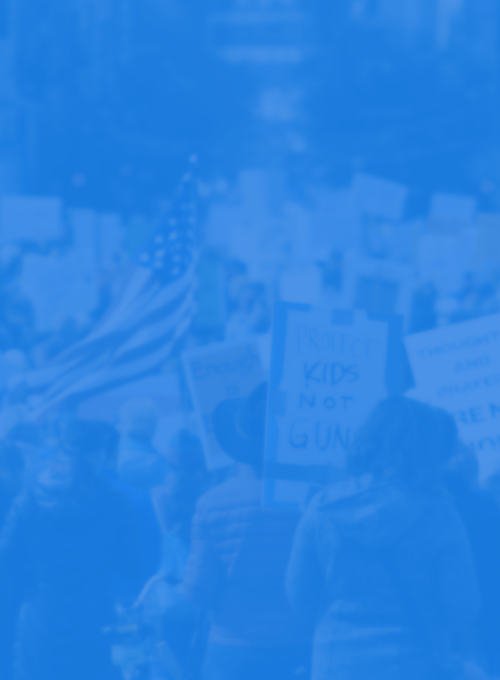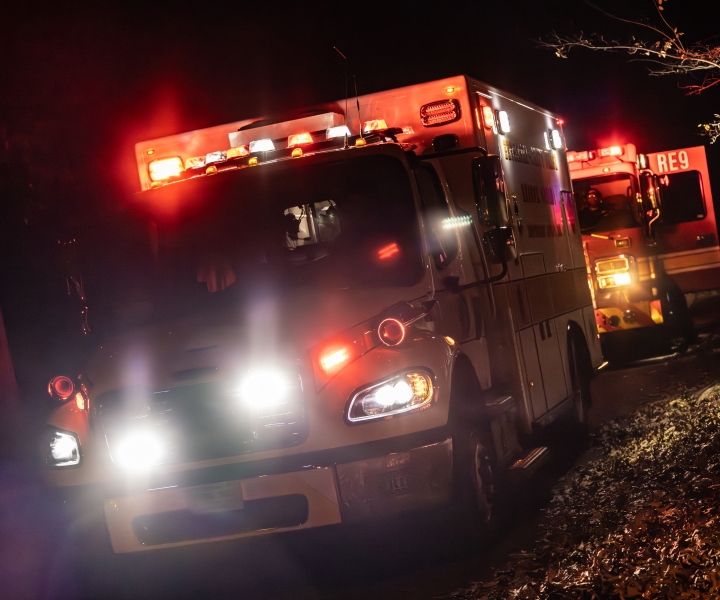
HEADED INTO 2025
Last year, the Johns Hopkins Center for Gun Violence Solutions advanced life-saving solutions and achieved significant impact! Read our list of 2024 Accomplishments to see the progress that we will build on in the New Year!
The Center is committed to doing MORE to enact evidence-based policies to save lives in 2025.
Gun Violence in the U.S. 2022: Examining the Burden Among Children & Teens
For the third straight year, firearms killed more children and teens, ages 1 to 17, than any other cause including car crashes and cancer. Our analysis found 48,204 people, the second highest on record, died from gunshots in the U.S. in 2022, including 27,032 suicides, an all-time high for the country.
We don’t have to live with gun violence as a normal part of American life
Our team at the Johns Hopkins Center for Gun Violence Solutions includes highly experienced researchers and public health-trained advocates to address gun violence as an epidemic-level public health emergency. Because gun violence disproportionately impacts communities of color, we ground our work in equity and seek insights from those most impacted on appropriate solutions.
This approach combines evidence-based solutions and effective advocacy to save lives.
New at the Center

2024 Accomplishments
This year, the Johns Hopkins Center for Gun Violence Solutions mobilized its team to conduct research and advocate for evidence-informed gun violence solutions.

New Research Shows Your ZIP Code Could Make You 27 times More Likely to be Fatally Shot by Police
A new study found that an individual’s ZIP code for their residence could indicate their risk of being fatally shot by police.

Continuing Trends: Five Key Takeaways from 2023 CDC Provisional Gun Violence Data
The latest provisional data from the Centers for Disease Control and Prevention (CDC) for 2023 shows record rates continue for firearm suicides and gun violence among youth.

Guns Remain Leading Cause of Death for Children and Teens
Center for Gun Violence Solutions latest annual report highlights CDC 2022 firearm deaths, with focus on young people and people of color

New Guide Empowers Leaders to Pass Effective ERPO Laws
The Center teamed built a roadmap for lawmakers to follow in crafting ERPO laws backed by research.

Violence Prevention Researchers Release Toolkit Aimed at Establishing Violence Reduction Councils in Local Communities to Save Lives
Violence reduction councils bring community groups together to prevent violence, meet unique needs of community.
Listen to The Center's Podcast
In "Sufficiently Analogous," the Center's law and policy director, Kelly Roskam, JD, alongside law and policy advisors Tim Carey, JD and Kari Still, JD examine Second Amendment court challenges to gun safety laws and will explore the potential implications of these challenges on public health policies aimed at reducing gun violence. With a focus on providing insightful analysis, the podcast aims to shed light on the intricate legal issues surrounding gun rights and regulations.
Garland v. Cargill
The U.S. Supreme Court recently ruled that the ATF did not have authority to ban bump stocks, essentially making them legal to use once again. A bump stock, attached to a gun, allows it to fire rapidly—effectively converting a semi-automatic firearm into a machine gun. Core faculty member at the Center and assistant professor, Alex McCourt, JD, PhD ’19, MPH, explains key takeaways from the case, what could come next & more.
The Geography of Gun Violence
Gun death rates vary widely across the United States due to differences in socio-economic factors, demographics, and, importantly, gun policies. In general, the states with the highest gun death rates tend to be states in the South or Mountain West, with weaker gun laws and higher levels of gun ownership, while gun death rates are lower in the Northeast, where gun violence prevention laws are stronger.
“Other” gun death rates include legal intervention, unintentional, and undetermined. Source: Centers for Disease Control and Prevention. National Center for Health Statistics. Underlying Cause of Death. Age-adjusted Gun Rates per 100,000. WONDER Online Database, 2018-2022
Connect
Follow the Center for Gun Violence Solutions on social media and share our latest content.

Support Our Work
Life-saving solutions exist. We can make gun violence rare and abnormal. Join us.
Violence Reduction Councils
Violence Reduction Councils (VRCs) are a public health-based model to prevent violence in cities. VRCs bring together public health, social service agencies, criminal justice, and community-based organizations involved in violence prevention. Collectively, these groups review homicides and assault information at the aggregate and case level.

Center for Gun Violence Solutions
We address gun violence as a public health emergency and utilize objective, non-partisan research to develop solutions which inform, fuel and propel advocacy to measurably lower gun violence. The Center applies our unique blend of research and advocacy to advance five priority evidence-based gun violence prevention policies. Our research shows that, when enacted in combination, these policies have the potential to save thousands of lives.

The Public Health Approach to Prevent Gun Violence
A public health approach to prevent gun violence addresses both firearm access and the factors that contribute to and protect from gun violence. This multidisciplinary approach brings together a range of experts across sectors—including researchers, advocates, legislators, impacted communities, community-based organizations, and others—in a common effort to develop and implement equitable, evidence-based solutions.
A Successful Example of the Public Health Approach
The public health approach to tackling public health crises in America has been used over the last century to eradicate diseases like polio, reduce smoking deaths, and make cars safer. This public health approach has saved millions of lives. We can learn from the public health successes — like car safety — and apply these lessons to preventing gun violence.
Sources: National Traffic Highway Safety Administration (NTHSA). Motor Vehicle Traffic Fatalities and Fatality Rates, 1899-2017; Centers for Disease Control and Prevention, National Center for Health Statistics. National Vital Statistics System, Mortality 1968-2017 on CDC WONDER Online Database.
One of the greatest American public health successes is our nation's work to make cars safer. To reduce gun violence, we should apply this same time-tested public health approach.

Firearm Violence
For each firearm death, many more people are shot and survive their injuries, are shot at but not physically injured, or witness firearm violence. Many experience firearm violence in other ways, by living in impacted communities with high levels of violence, losing loved ones to firearm violence, or being threatened with a firearm. Others are fearful to walk in their neighborhoods, attend events, or send their child to school. In short, firearm violence is public health epidemic that has lasting impacts on the health and well-being of everyone on this country.
Quick Facts From 2022 CDC Provisional Data
48,117
In 2022, 48,117 people died by guns, an average of one person every 11 minutes. 26,993 people died by gun suicide in 2022. Provisional data shows gun deaths are up 21% since 2019. Overall, the gun death rate decreases, and the number of gun suicides reaches an all-time high.
87%
In the past decade (2013-2022), the gun death rate among children & teens has increased 87%. Guns were the leading cause of death for children and teens (ages 1-19) in the U.S. for the fifth straight year. Both gun homicides and suicides fueled the increase.
20x
Black children & teens were 20x as likely to die by firearm homicide compared to their white counterparts, in 2022. The gun suicide rate among Black children & teens (age 10-19) surpassed the rate among white children & teens (age 10-19) for the first time on record.
5
The Center recommends 5 evidence-based solutions to prevent gun death and injury: Firearm purchaser licensing, Extreme Risk Protection Orders and Domestic Violence Protection Orders, safe and secure firearm storage practices, strong laws limiting public carry, and community violence intervention programs.
The Center Resources
Subscribe to the Center Newsletter
Stay up-to-date on the latest in gun violence and gun violence prevention updates from the Center for Gun Violence Solutions.
